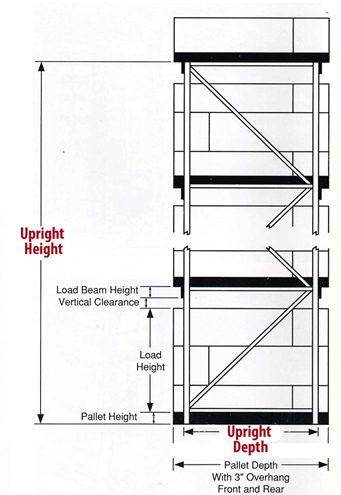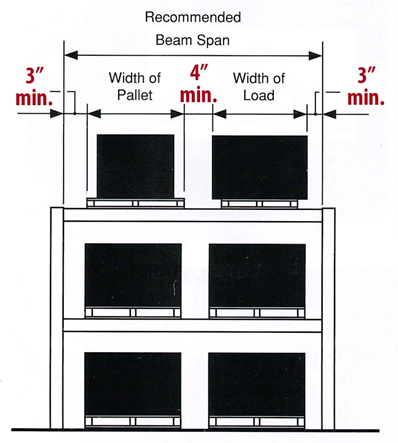When I first started working for Hi-Cube I was overwhelmed by the amount of information I needed to understand about pallet racking. Everyone seemed to be using industry terms that I did not understand. Yes, most of our Sales Representatives have over ten years of experience in the material handling industry, but I didn’t!
After a few months I realized that it was not such a hard thing to understand so I would like to share three steps that helped me understand how customers order pallet rack.
1) Select upright and load beams
The first thing you need to know is the measurements of your Upright Depth and Upright Height.
Upright depth: Allow for 3″ pallet overhand front and rear to eliminate the need for critical pallet placement. For example: Use 42″ deep uprights with 48″ deep pallets.
Upright Height: Usually one pallet is stored on the floor and one pallet high on each pair of load beams, including the load beams at the top of the uprights.
There is no need for upright height to reach the top of the top pallet load. Here you can find more information on this topic. For example: if you plan to store pallets four high and the combined pallet, load and load beam heights including clearance equal 40″ for each pallet, you should use 10ft. high uprights.

2) Beam Selection
The next is to determine the beam span:
• Determine the width of the pallet or load, whichever is greater, to be stored;
• Add 3″ minimum clearance between upright frames and pallet or load, whichever is greater.
• Add 4″ minimum clearance between pallets or loads, whichever is greater.
Note: Normally, it is preferable to store at least two pallets in width with 10″ total minimum clearance. It straddle type (outrigger) trucks are used, additional clearance may be required.

3) Beam Capacity
• Determine the weight of the load (s) to be stored on a pair of beams;
• Using the span of the beam and total weigh of the load(s), determine the proper beam type from the beam capacity chart.
For the most common questions and answers about pallet racking, click here
